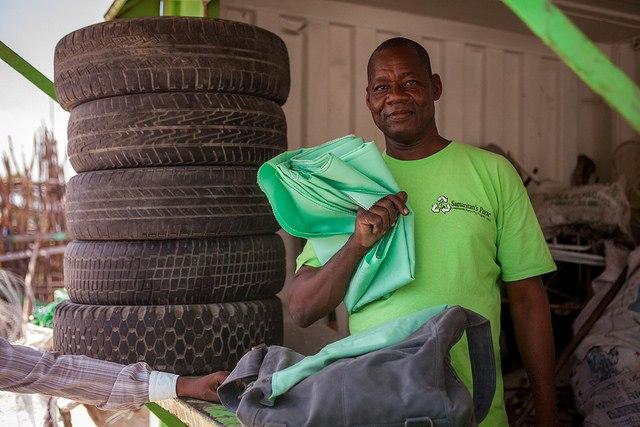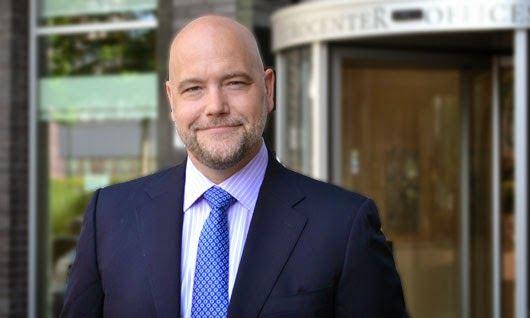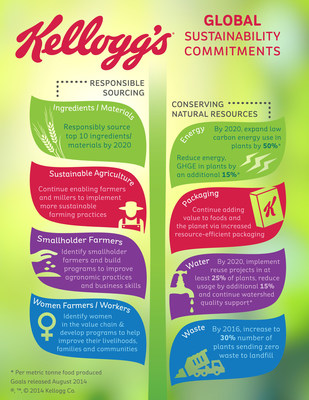Green Flag for Green Power at Michigan International Speedway


If you've been following the sustainability initiatives of racing tracks affiliated with NASCAR (the National Association for Stock Car Auto Racing), the idea of a green auto racing industry is beginning to make sense. Last Sunday, the Michigan International Speedway chipped in with its own addition to the effort.
The Speedway made a high-profile pitch for renewable energy in partnership with the utility Consumers Energy, using its Pure Michigan 400 NASCAR Sprint Cup event as the springboard for announcing a raft of new green energy programs.
As part of the historically petroleum-dependent NASCAR circuit, the Speedway's contribution to sustainability offers some dependable guideposts for businesses seeking to transition into a more sustainable energy model, so let's take a closer look and see what they're up to.
Sustainability at Michigan International Speedway
The Speedway's sustainability announcement included several different aspects that are familiar territory by now. They are notable because they are widely available to practically any company or organization, whether or not fossil fuels are central to their business model.First, the Speedway will become the largest among 20,000 customers to purchase 100 percent of its power through the Consumers Energy Green Generation renewable energy program. Green Generation dovetails with the Obama administration's focus on a diversified renewable energy future that takes advantage of local and regional energy assets.
Currently included in Green Generation are wind power (about 76 percent as of 2013) and landfill gas (about 24 percent), all produced within Michigan. The utility's renewable energy profile also includes biomass and a longstanding (early 20th century) involvement with hydroelectricity.
Tree-planting is a familiar action for offsetting carbon emissions that also factors into the Speedway's plans. In partnership with Consumers Energy, the Speedway will plant a total of 6,000 trees in Michigan to offset two race weekends.
Energy efficiency upgrades are another well-worn ground for improvement, and the Speedway's new announcement also includes a pledge to work with Consumers Energy on cutting energy consumption at the track.
Sustainability actions tailored for Michigan International Speedway
There are a couple of unique aspects to Michigan International Speedway that also factor into the new plans.
In and around the facility are more than 2,200 campsites, where racing fans put down for overnights at the track. The Speedway and Consumers Energy will use the opportunity to promote Green Generation and energy efficiency to the overnight guests.
Another feature of interest is the Speedway's expansive grounds. Other tracks on the NASCAR circuit have begun to take advantage of their real estate to invest in on-site renewable energy, and the Speedway has pledged to work with Consumers Energy to identify solar, wind or other potentials.
Is more green in store?
Some of the actions taken by NASCAR also offer a hint at other strategies that could become part of the green culture at Michigan International Speedway. The organization has been introducing its fans to electric vehicles, bio-based auto products, recycling and a safe driving campaign that overlaps with fuel-saving driving habits.
Image (cropped): Michigan International Speedway by Brian Rawson-Ketchum.
Collecting Discarded Plastic (and Data) For That T-Shirt


By Gina Faiola
Sure, that shirt you’re wearing may be designed from 100 percent post-consumer plastic, and perhaps you know that it took about 10 or 15 soda bottles to make its fabric, but do you know what country those bottles came from? Do you know how they got recycled or who picked them up? Are you curious about the impact your T-shirt purchase has on supporting the livelihood of the person who collected those bottles? Thread, a Pittsburgh-based B-Corp, is betting that you want to know, and is poised to provide that information when you purchase a product made from its recycled polyester fabric.
Founded in a lightbulb moment following a trip to Haiti -- where founder Ian Rosenberger saw widespread underemployment, unsafe living conditions and discarded plastic bottles strewn across streets and beaches --Thread was conceived to take that plastic from “ground to good." Fast forward three years, and the company is in partnership with Ramase Lajan -- an Executives Without Borders NGO program, the name of which translates to “picking up money” in Haitian Creole. Currently, Thread operates in Honduras and Haiti, supporting 225 full-time jobs and 3,000 income-generating opportunities within the collection centers and recycling facilities where the bottles are washed, processed and turned into “flake," the preliminary plastic material necessary for recycled polyester fabric production.
Each recycling center operates as a nonprofit private entrepreneurship model, and according to Kelsey Halling, Thread’s director of community development, collection center owners who received start-up capital were chosen as well-respected pillars of the community. This helped in overcoming initial community stigma for the dirty work of discarded plastic collection. “There is much less shame now, and plastic isn’t on the streets as much anymore. There’s other waste that gets built up, but plastic doesn’t lie around anymore because people know it’s valuable,” Halling said.
Added Frank Macinksy, Thread’s director of marketing: “When you ask people in Haiti what they need, they don’t ask for $100 in their pocket or a trip to the market, what they tell you they need is education and jobs. They want the opportunity to have a dignified life through hard work.”
With Thread's model, entrepreneurial gusto is echoed down the supply chain. Said one plastic collector Louis Gerard Germaine: "If you need to find an income, you can just go out and get plastic to get paid. I am always welcomed by Mr. Gustave and am happy to come to the center to see him."
Competition also helps to drive this system, as other international companies are simultaneously collecting plastic alongside Thread’s collection centers. What differentiates the centers from each other is often left to the creativity of center owners, who incentivize collectors with cool drinks and televisions broadcasting the latest sporting event; this summer’s World Cup matches were a big draw.
What sets Thread apart from its competitors is the time the team spends at the recycling and collection centers, where they interview and record employee information ranging from the standard -- name and hometown -- to the more detailed, such as how often and why employees are collecting, what they like about the work, their challenges, and what they spend their money on. This data informs Thread’s process in many ways, but primarily it helps improve their operations for the benefit of their employees. “Our goal from the beginning has been to create dignified work and jobs--that will always be a major push for us. But we are also working with our partners on professional development, sanitation and health training in the neighborhoods where we collect,” Halling said.
Secondarily, this holistic data collection allows Thread to track individual employee impact, and pass that information on to potential production partners for marketing purposes. Said Macinsky: “We have the luxury, and the responsibility, of knowing our supply chain at a granular level. Once we lose sight of our purpose--the people that are making our fabric and the resulting end products possible--then all of our value goes away. We just become a commodities business that is making as much plastic fabric as possible at the lowest price possible. It doesn’t help us create a true impact.”
And while small-batch, single-source polyester might not make up your favorite T-shirt just yet, more than 55 percent of global consumers recently reported a willingness to purchase products that make a positive social or environmental impact, up from 45 percent two years ago, according to a recent Nielsen survey. Thread is poised to help drive this change, and make things better in the process. Said Macinksy: “Until we start tackling that first R of the three R’s -- which is reducing -- and until there’s a cultural shift, there’s still going to be a need for reusing and recycling plastic, which is something that we’re in a unique position to do responsibly. We’re going to be trying to put the band-aid on for a while.”
Gina Faiola is an MBA candidate at Chatham University in Pittsburgh, where she focuses on sustainable apparel production and marketing. She has worked in various realms of retail for single store and Fortune 500 companies, and never quits in her pursuit to turn things green. In other words, she is passionate about seeing shrinking carbon footprints in beautiful and sustainably produced shoes!
Where’s the Community Accountability in Impact Investing?


Editor’s Note: This article originally appeared in “The Millennials Perspective” issue of Green Money Journal. Click here to view more posts in this series.
By Morgan Simon
The concept of impact investment -- which has the explicit purpose of supporting economic and community development -- is receiving a growing amount of attention from an increasingly diverse set of financial players. This emerging trend is one of the most exciting, and potentially problematic, trends I’ve seen over the last decade. As with any new field, impact investing raises consequential questions and issues with the answers and intended results remaining up for grabs.
Let’s consider the following questions to start:
- How is impact being defined, and by whom?
- How are strategic opportunities being identified and defined, and by whom? How will impact capital be deployed, with what objectives, and toward what ends?
- Under what conditions shall profits be made from impact investment? Who should govern the agreements about use and distribution of the profits?
I am concerned that in a drive for global scale in impact investment, we will lose the voices that should matter the most — the billions of people who will be affected by social enterprises funded by our investments. I am advocating for the establishment of effective mechanisms to empower “beneficiaries” to be actively involved in the planning, execution, governance and ownership of enterprises -- and in the flows of capital connected with them. I do so from two hats — as managing director of Pi Investments, a single-family office focusing on 100 percent impact investments towards a generative and just economy, and as founder and chair of Transform Finance, a nonprofit organization building a bridge between impact investment and social justice.
Current problematic trends in impact investment
There are several dynamics at play in the current impact investment market:
Investors and entrepreneurs may profit at the expense of communities.
The goal of impact investment for many is to have a social impact while being able to make the same kind of investment returns that conventional markets have provided. If that remains the case, and if the ownership of social enterprises remains limited to the privileged, then it is difficult to imagine that impact investments will ultimately benefit communities, or facilitate any sort of resource transfer from the global north to the global south (or in the U.S. context, from the rich to poor). If ownership structures are not addressed, then by definition, these investments must be extracting value, thus repeating the cycle of exploitation that we have seen under so many different names over the decades. This is particularly apparent in the context of projects that see poor communities singularly as consumers rather than as participants in all aspects of the economy. There is an implicit, yet often unacknowledged, tension in impact investment between how producers are paid, how steeply consumers pay for products, and how much entrepreneurs and investors can make or expect to make over time.
Impact gets defined by investors and entrepreneurs instead of beneficiaries.
Some of the large financial institutions jumping on the impact bandwagon have made public statements defining impact as simply any investment made in a developing country. The many communities who have suffered from natural resource extraction, displacement and poor labor conditions know this is not the case, but they are not being consulted in the process of defining goals for impact investment projects. Similarly, well-meaning entrepreneurs tend to define community involvement as product research, such as holding marketing-based focus groups, rather than creating infrastructure for long-term engagement and community leadership development. This is largely due to the fact that impact investment has evolved as a “top down” industry—with investors setting the criteria for impact and returns with the consequences filtered down from social entrepreneurs to communities. In this approach there is little room for letting community needs guide the field.
There is a major “capital gap” for community-run projects.
Although many investment projects are executed in the global south, they are generally run by the privileged—these entrepreneurs and their investors are the ones who will receive the $183 billion to $667 billion in profit that J.P. Morgan projects. It is, at this point, exceptionally rare to impossible for communities, organizations or individuals from the global south to receive access to funds if they do not speak English and have advanced degrees. Communities are simply the resource bases for projects; or, moreover, their involvement is generally limited to the consumption of specific products.
Capacity building is lacking.
Capacity building programs for social entrepreneurs to receive training and access to funding are plentiful, but similarly limited to a global elite. Further, there has been no effort to engage these programs in a broader conversation about the structuring of opportunities that would create access for people without a university education. Additionally, there is a need to explore methodologies that will respect and fit community leadership models already in place, rather than asking communities more accustomed to these collective structures to adopt Western business models.
Read Morgan's full article here: http://bit.ly/ULMcey
Article by Morgan Simon, who has spent the last decade engaged in impact investment, emphasizing community empowerment, leadership and ownership. She is a Managing Director at Pi Investments, a single-family office building a 100% impact portfolio with an emphasis on community empowerment and environmental sufficiency. In that capacity she evaluates investments across asset classes, including direct investments and funds.
Morgan is also a board member of Toniic, where she served as founding CEO from 2010-2013. Toniic is a global network of early-stage social investors looking to move $100M into impact. Toniic members share deal flow, due diligence and monitoring on global investments in this action-oriented community. She is the chair of the investment committee for The Working World, a fund for stakeholder-owned businesses in the US, Argentina and Nicaragua, and on the board of ROC United, a worker center supporting 10,000 restaurant workers nationwide. She is also the Founder and Chair of Transform Finance, bridging impact investment and social justice.
Linq Edges Vegas (Slightly) Closer to Sustainability


Whether by foot or by car, if you've ever tried to navigate the Las Vegas strip you've likely found it difficult at best. The wide swath of gridlocked roadway surrounded by dangerously narrow sidewalks and confusing pathways is enough to challenge even sober pedestrians. The fact that most casinos' entrances are designed grandly for cars only makes matters worse when the vast majority of people are trying to walk, or at least stumble, to the next casino. It's apparent that there has never been much thought put into ways of connecting casinos nor much thought put into the idea that people might want to walk in Las Vegas in a vaguely pleasant environment. Pedestrian bridges have helped but seem to be slapped together as afterthoughts.
Good urban planning that prioritizes a safe and pleasant pedestrian environment is a key tenet of sustainability, and could do wonders for the Las Vegas strip. There's a long way to go, but Caesar's new Linq development is a step in the right direction.
Video below!
The Linq is the name for a pedestrian "street" wedged between the Linq casino and the neighboring Flamingo casino. It was conceived by Ceasar's (who own both the Linq and the Flamingo) as a retail area to draw in visitors from the strip and is anchored by an enormous ferris wheel called the High Roller. The concept, therefore is to create something of a side street, safe from the chaos and traffic of the Strip. Although the Linq is still a very artificial construct more or less like an outdoor mall, it's a radical improvement to the status quo of walking in Las Vegas. The hope for me is that developments like this inspire tourists to take the notion of walkable urban spaces home with them.
The kicker? At one point during my walk along the Linq I overheard a complete stranger say, and I quote: "Oh wow, this is so nice. So much more sustainable!" ... You can't make this up. I wish I had been recording.
Learn more in my video below:
Ed disclosure: Lodging for this trip was provided by Caesar's
Kellogg announces new goals to reduce energy, water and waste


Cornflakes-maker Kellogg is to responsibly source its top 10 ingredients and materials by 2020, and validate compliance across all direct suppliers by 2015. The move is part of a new tranche of social and environmental commitments announced by the American cereals giant.
"This company was founded on the belief that there's an inherent goodness in grains and that continues to hold true today," commented John Bryant, Kellogg Company chairman of the board and chief executive officer. "We are committed to nourishing families so they can flourish and thrive. Our new sustainability goals will help us do this by delivering high-quality grains in a responsible way that enriches the lives of consumers and agricultural growers around the world."
Kellogg is particularly focusing on two areas – responsible sourcing and natural resources. Among its commitments to responsible sourcing it says it will build programmes to help small-scale farmers improve their livelihoods by adapting to climate change and improving their agronomic practices and business skills as well as identify areas within its supply chain with a high prevalence of women farmers and workers and develop programmes to provide targeted resources and education.
On the natural resources front, the company has committed to further reduce energy and GHG emissions by an additional 15% (per metric tonne of food produced) from 2015 performance and expand use of low-carbon energy in plants by 50% by 2020. It also aims to support watershed quality, implement water reuse projects in 25% of plants by 2020, and further reduce water use by an additional 15% (per metric tonne of food produced) from 2015 performance.
3p Twitter Chats: Top 10 Tweets of Substance


With a busy week behind you and the weekend within reach, there’s no shame in taking things a bit easy on Friday afternoon. With this in mind, every Friday TriplePundit will give you a fun, easy read on a topic you care about. So, take a break from those endless email threads, and spend five minutes catching up on the latest trends in sustainability and business.
Let's be honest: It's Friday afternoon, and you'll probably spend half of your post-lunch day on social media anyhow. So, why not learn something in the process? Some complain that Twitter is just wasted time and that nothing of substance can be said in 140 characters, but these 10 quotes from our Twitter chats prove them wrong. Read, get inspired and RT away!
All the tweets here are from recent chats that we've organized with various collaborators and sponsors, to see full synopses of these chats, visit our main Twitter chat page here.
1. Kimberly-Clark and Greenpeace talk collaboration in #ForestSolutions
A4a: We were hopeful change was near. That could = good things for forests. Eagerness overcame awkwardness #forestsolutions
— Rolf Skar (@RolfSkarGP) August 5, 2014
A11a: Once we started one on one conversations, we realized we had more in common than we thought. #forestsolutions — Peggy Ward (@PeggyatKC) August 5, 2014
Greenpeace and Kimberly-Clark went on to describe how they resolved their differences five years ago and what they’ve achieved since. Their collaboration success story proves what's possible when stakeholders work together, and the results are enough to brighten anyone's Friday.
Click here for a full recap of our #ForestrySolutions chat.
2. Duke's Deb Gallagher speaks the truth about environmental leadership in #EnvLead
Our Twitter chat earlier this year with Duke University centered around its Environmental Leadership program, but naturally the conversation extended to how environmental leadership can be put into practice across all sectors. With admirable ease, Deb Gallagher, Duke associate professor of the Practice of Resource and Environmental Policy, spoke to a broad range of sustainability issues.On partnerships:
A11a: Critical for all sectors to work together. Partnerships between non-profits and corporate sector are key. #envlead
— Deb Gallagher (@drdebgal) January 14, 2014
When asked how to make environmental leadership a true triple-bottom-line philosophy that spans the whole world, Gallagher dropped this beauty:
A20: Environmental leadership is just a shell if it doesn’t address the concerns of under-resourced communities. #envlead
— Deb Gallagher (@drdebgal) January 14, 2014
You said it, Deb!
Click here for a full recap of our #EnvLead chat.
3. David Tulauskas calls for a new future for the auto industry in #GMCSR
General Motors has been open about the fact that it's facing an automotive industry that is unsustainable in its current form. We asked GM’s director of sustainability, David Tulauskas, why the company feels that way and what could be done to change it. He summed it perfectly in a few short words:A2a Our industry is heavily reliant on oil and various resources we use are stressed and becoming increasingly scarce #gmcsr
— David Tulauskas (@davidtulauskas) July 16, 2014
A2c Addressing challenges through innovative, customer-centered solutions will make our business stronger and more competitive. #gmcsr — David Tulauskas (@davidtulauskas) July 16, 2014
Preach it, David! The chat went on to touch on everything from widespread adoption of electric vehicles to "transforming transportation," giving us plenty of reasons to keep our eye on GM's role in the "new" auto industry.
Click here for a full recap of our #GMCSR chat.
4. Mars, Inc. speaks to sustainability and consumer purchasing decisions in #MarsSusty
In a recent Twitter chat with Mars Inc. about how the company handles sustainability, @dean_best asked: "Do you have examples of how consumer interest in sustainability can change their purchasing behavior?" The company had this say:
We hope consumers do value sustainability as it will encourage us to do more. #MarsSusty - @MarsGlobal
After describing cause-marketing campaigns at some of its biggest brands like Uncle Ben's and Pedigree, as well as supply chain sustainability initiatives for everything from palm oil to tea, this remark seemed especially poignant. Even for a company already making exemplary strives in sustainability, consumers hold the power to inspire them to do more. Vote with your dollar, folks!
Click here for a full recap of our #MarsSusty chat.
5. Pam Wickham puts STEM education at the forefront in #RaytheonCSR
Most people wouldn't necessarily think of a defense company as a "green" company, but Raytheon took us by surprise in our recent #RaytheonCSR chat. Pam Wickham, Raytheon's VP of corporate affairs and communications, discussed how the company is addressing a range of issues, from finding jobs for veterans to reducing greenhouse gas emissions. She also spoke in-depth about the company's efforts to boost STEM education, including this call for more stakeholders to take action:
A8:Today’s global economy depends on #STEM #RaytheonCSR
— Pam Wickham (@PamWickham1) July 8, 2014
A8d: It’s time for Corporate America to step up. We all can play a role in building #STEM talent #RaytheonCSR — Pam Wickham (@PamWickham1) July 8, 2014
Click here for a full recap of our #RaytheonCSR chat.
6. McDonald's meets criticism with transparency in #McDsustainability
When you host a Twitter chat with a consumer-facing corporate behemoth like McDonald's, you expect to see both cheers and critiques to roll through your feed. Bob Langert, VP of sustainability at McDonald’s, met critiques head on and noted that while there's still much work to be done, the best thing the company can do to prove it's serious about sustainability is embrace transparency:
A8a) Being a big, visible brand, we’ll always have some critics. The key for us is to welcome and embrace transparency #mcdsustainability
— McDonald's (@McDonaldsCorp) May 7, 2014
A8b) We'll accelerate social/digital to be transparent & connect w/ consumers/stakeholders & engage in the conversation #mcdsustainability — McDonald's (@McDonaldsCorp) May 7, 2014
As our Editor in Chief Jen Boynton pointed out, using the corporate handle for a sustainability chat -- and opening the brand up for public criticism on social and environmental issues -- is a great first step.
Click here for a full recap of our #McDsustainability chat.
7. Future of Fish keeps an open mind in our #3pChat on sustainable seafood
Some say developing a sustainable approach to seafood is black and white -- either eliminate wild catch to preserve ocean biodiversity or halt the development of aquaculture to avoid its potential environmental impacts. But in our recent #3pChat Tweet Jam on sustainable seafood, Future of Fish pointed out that it takes a multi-pronged approach to get things done:
Wild catch can stay; way we catch & distribute wild catch needs to change. our ideal supply chain: http://bit.ly/1srD2PG #3pchatClick here for a full recap of our #3pChat on sustainable seafood.Aquaculture is definitely part of multi-pronged solution, & many innovations happening: http://bit.ly/1rM8o35 #3pchat @BellAquaculture -- @FutureofFish
8. Heineken talks sustainability from all angles in #BaBF
Our recent Twitter chat with Heineken on its Brewing a Better Future (BaBF) strategy touched on loads of sustainability efforts at the company, from empowering smallholder farmers and investing in renewable energy to cutting back on water use and waste. In the chat, Jan-Willem Vosmeer, the company's corporate social responsibility manager, summed up all of these initiatives in less than 140 characters:
A8: JwV: Our approach to #sustainability covers the value chain ‘from barley to bar’ and aims to benefit our business, stakeholders. #BaBF
— HEINEKEN Company (@HEINEKENCorp) April 30, 2014
Happy Hour, anyone?
Click here for a full recap of our #BaBF chat.
9. Jerry Lynch addresses one of the world's mega-challenges in #GenMillsSusty
In the midst of remarks on water savings, carbon emissions reductions and empowering farmers, the dialogue in our recent Twitter chat with General Mills turned to one of the most pressing mega-challenges facing the industry -- how to feed a growing population in a resource-constrained world. General Mills Chief Sustainability Officer Jerry Lynch had this to say:
A10c: Will need 50% more food, 45% more energy and 20% more water by 2050. #GenMillsSusty
— Jerry Lynch (@gmills_jerry) April 23, 2014
A10d: Innovation in sustainability is needed to address these growing needs. #GenMillsSusty
— Jerry Lynch (@gmills_jerry) April 23, 2014
Click here for a full recap of our #GenMillsSusty chat.
10. SAP and CDP get holistic with integrated thinking in #SustyBiz
Our recent Twitter chat with SAP, BSR and CDP centered around "integrated thinking," a holistic approach that allows companies to approach sustainability in all of its departments internally, as well as externally, to drive meaningful change. Nigel Topping, executive director of CDP, and Peter Graf, chief sustainability officer for SAP, summed the concept up beautifully:
A3a #SustyBiz integrated thinking is holistic in three dimensions – full value chain, full range of capitals and multiple timescales…
— Nigel Topping (@topnigel) April 11, 2014
A3b Understand the links between financial and non-financial performance helps find big opportunities: http://t.co/hazM2n1HsV #sustybiz
— Peter Graf (@PeterGGraf) April 11, 2014
Sounds like a plan to us!
Click here for a full recap of our #SustyBiz chat.
Don't forget to follow us on Twitter (@triplepundit) and stop by for our upcoming Twitter chat with Heineken on August 27.
Mary Mazzoni is a Senior Editor for Triple Pundit. You can follow her on Twitter @mary_mazzoni.
Pepsi Bets Cashew Juice Can Change the Game


When you stock up on cashews at your favorite store, those fatty and delicious nuts have long left behind heaps of agricultural waste. But that waste, in the form of fruit attached to the nut often called a cashew apple (or cashew fruit), is full of nutrients, especially vitamin C. Cashew fruit also has plenty of other potential uses -- meat substitute, animal feed and even booze among them.
Now PepsiCo is working with farmers in India to source cashew apples and use the crop as an ingredient in its products. The long-term result for Pepsi could be the next coconut water, pomegranate juice or hazelnut milk -- and in the words of one of the $66 billion snack and beverage giant’s newer slogans, could “change the game” in the beverage industry.
Pepsi launched a project earlier this year in Maharashtra, India to source the cashew fruit. In a partnership with the Clinton Foundation, the program will work with small farmers to improve their farming techniques, increase yields and therefore, boost incomes for farmers and their families. This is nothing new for Pepsi: The company has launched similar sustainable agriculture programs with chickpea farmers in Ethiopia and sunflower growers in Mexico.
Some of the big challenges in commercializing cashew fruit include storage, transport and shelf life. The fleshy fruit must be picked up off the ground or collected in nets drawn out under the trees, not picked off branches. Once collected, they have to be processed within 24 hours — and if the nut is separated from the fruit, that timeframe is slashed to six hours. If the fruit is going to be sold whole, as in a supermarket, then it must be stored at a temperature no cooler than 41 degrees Fahrenheit (5 degrees Celsius). That is one issue growers have in Brazil, which is where the cashew originates: Most of the growers sourcing stores in Sao Paulo and Rio de Janeiro are almost 1,900 miles (3000 km) from those large markets. The fruit, called caju, is ready available at Rio’s ubiquitous juice stands, but even then the creamy cashew fruit used to make the drinks is often frozen because of its short shelf life. Therefore only 12 percent of all cashew fruit in Brazil is processed, including the portion that ends up in animal feed.
Pepsi is hoping improved farming practices and a supply chain that can deftly handle the fruit will pay dividends for both the company and its farmers in India. At first the juice will be used as an ingredient in some of Pepsi’s Indian juice products. But the company has bigger and quite realistic goals to harvest more of this fruit for exports to other markets.
After all, consumers are looking for the next best nutritional, and for many younger buyers, a more sustainable drink. Changing habits, not to mention the fact that soft drink sales have been flat for a few years, are among the reasons why pomegranate juice is no longer only in Middle Eastern grocery stores and coconut water has moved from those bulky cans found at Asian grocery stores to boxes of one-liter Tetra-Paks at Costco. Pepsi has an opportunity to market a new drink that would actually benefit farmers — who for years have simply discarded what they thought has no value.
Such a product also nudges Pepsi closer to its goals of becoming more of a “nutrition” company. The company’s claims it was moving in that direction have elicited more yawns and raised eyebrows than nods — and CEO Indra Nooyi, while one of the more inspiring business leaders to have emerged the past decade, elicited a fair amount of guffaws a few years ago when she said, “Doritos are not bad for you.” But in a world where we have to feed more people — and overall more affluent and demanding people at that with the growing middle class — big companies like Pepsi will be part of this ongoing conversation. Turning farm waste into a marketable drink, while improving the bottom line of small farmers, is a positive, and delicious, step.
Image credit: Poderdasfrutas.com
Leon Kaye has lived in Abu Dhabi for the past year and is on his way back to California. Follow him on Instagram and Twitter. Other thoughts of his are on his site, greengopost.com.
Q&A with the New Head of GRI, Michael Meehan


Editor’s Note: A version of this post originally appeared on the CSR Reporting Blog.
Earlier this summer, the Global Reporting Initiative welcomed a new chief executive, Michael Meehan.
Certainly, he has a strong legacy left by Ernst Ligteringen, who did a sterling job leading GRI in the face of many challenges over the past 12 years. After chatting with Michael, I am left with optimism that he knows how to embrace the value that GRI has created and will skillfully navigate new themes in the zeitgeist of sustainable development and sustainability disclosure.
It's a complex map, and the sort of practical entrepreneurial spirit, driven by clarity of vision and collaborative orientation that Michael Meehan brings, seems to be the right mix.
As Michael takes up his role, I am sure the word strategy will feature quite a lot in the first few weeks and months. Everyone will want to know what his priorities are, goals, targets, new ways of doing things, more of this, less of that, new broom and all that. I expect there will be quite a few who have some advice and recommendations, seeing a new chief as a new opportunity to get some things straight and promote an agenda.
Allen White was top-speed off the mark in an open letter to MM published in the Guardian (I always wondered about the point of open letters ... seems a bit oxymoron-ish to me) in which he lays down his priorities for the new boss. I expect there will be plenty more open, closed and ajar letters that attempt to influence the new boy on the block as he scans the landscape. However, for me, what's more important than giving Michael Meehan my views about where he should lead GRI is understanding who he is. I am interested in knowing more about what's important to Michael and what motivates him, because that will influence what he does at GRI.
I was privileged to have some time to chat with Michael on the phone ... and am pleased to be able to share a bit about his thinking.
Elaine Cohen: What's most important to you as you take up your new role?
Michael Meehan: What's most important to me, I think, is the same as what's important to most of us. We are all working to the same goal of a sustainable future.
The reason I am here is to help strengthen GRI's role as a driver and integrator of sustainability disclosure. The reporting landscape has changed, not necessarily unexpectedly, but it has changed. It is shifting rapidly, and that's a good thing. GRI is moving toward a standard-setting approach. This is an evolutionary step that GRI has been considering for some time. The emergence of other frameworks is also evolutionary. The perception out there is that these frameworks compete. But they do not. There is no competing version of materiality – there are different internal contexts that may apply, but this is not competition.
The thing that differentiates GRI is that it is a strong network that we can leverage to increase collaboration and innovation to create new frameworks. There is a perception is that more frameworks are bad. I don't see it that way. More frameworks are good. We want to see more frameworks that help corporations manage governance and disclosure more effectively in ways that move them forward. GRI has always been that network in the middle that helps things come together.. a sort of backbone of sustainability disclosure, holistically capturing all of the universe of things in CSR reporting that need to be addressed. No one else is doing this. My interest is to strengthen that backbone to improve collaboration and facilitate innovation. We can learn from industries – such as the technology industry – that have done this well and apply those learnings to the sustainability disclosure landscape. GRI is an inclusive framework. We can build on this.
EC: Who are the key stakeholders that you will be looking to engage and work with as you take up your new role?
MM: The world of stakeholders, for GRI, is expansive and we have to move forward on several fronts as we target to strengthen our collaboration and innovation in sustainability disclosure. We will set our sights in working more closely on the labor and human rights side, and supporting new regulatory initiatives relating to reporting, while continuing to build our international leadership. I'll be reviewing the excellent relationships that GRI has maintained so far and looking to accelerate and broaden the momentum in areas that support improved collaboration and innovation.
EC: What has been your interaction with GRI to date?
MM: I have been familiar with GRI for ages. In fact, early on in my career, I invented one of the first carbon management platforms, to help companies calculate and manage their carbon footprint. This was part of the emerging sustainability disclosure world at that time. The first things clients would ask was: how does this fit with reporting frameworks such as GRI? That was my first taste of sustainability reporting -- using a data collection and reporting framework to help companies improve their impacts.
EC: What do you see as the biggest opportunities for expansion/acceleration of sustainability reporting?
MM: The number of reporting entities is increasing rapidly. There's no doubt about that. At the same time, there are concerns about the quality of reporting. Part of our role at GRI is to help drive not only widespread acceptance but also help improve the quality of reporting overall. That's one opportunity. Another opportunity is in the area of helping remove the confusion that exists in the area of competitive frameworks. Other frameworks for sustainability disclosure understand the need for collaboration but from the outside, this looks like competition. I have already spoken to the leadership of several other frameworks and I hear a genuine desire to collaborate. We have to build on this desire and make collaboration more apparent and transparent to all those who are watching what we do and are affected by what we do. This challenge has been met time and time again in other industries. It can be done.
EC: What are the specific skills you bring that will be of most use to moving GRI forward in the next phase?
MM: One of the key things is related to my point above. One of the areas I specialize in is helping markets come together. One of the things I love most is being in a place at the time when everything starts to coalesce and helping it happen. I have experience in this area. It's what I find most challenging and most rewarding. There may be lots of different interests but everything has the same goal. That's the skill set that I bring to the table, and that's my focus. The outcome is for GRI to get through it with a stronger backbone. The work we are doing on standards is a part of that. We need to focus more on how people are reporting, how we interconnect with other frameworks and how we define the architecture of the reporting landscape. GRI is the only de facto sustainability metrics framework in the world. We can play a very significant role here.
The second thing that I bring is my experience with developing and using technology. The ability of organizations to capture data and information in reports is now facilitated through technology. At one time, it was impossible. Now, technology enables you to get data very quickly, cut it up in different ways and reuse it in different formats to meet different reporting requirements. A GRI report is an incredibly robust source of data and this fits very well with many aspects of corporate governance. I believe I can help advance the use of technology in reporting that will help companies become more efficient in the way they report and also enhance innovation in the reporting market place.
EC: What can we count on from you as GRI's new chief exec?
MM: You can count on my mantra: collaboration and innovation. I'll be looking to drive better outcomes for GRI and for all of us in the field of sustainability reporting. Communications is a big part of this. We need to make sure everyone knows what's going on.
The Importance of Gender Diversity in the Solar Technology Workforce


By Audrey Clark
Gender equality is a value that we take for granted these days. It is often mentioned that there can be a bias against women in math and science fields, but there's little discussion as to why that's an issue. If women don't take an interest in science and technology, who's really losing out?
Well, the truth is, it's the companies, the industry, and – in the case of solar technology – everyone who cares about the environment who are missing out on valuable workers who can bring more to the table. Here are some reasons for encouraging women to pursue careers in solar technology.
More money
A white paper written by venture capitalist Cindy Padnos showed that tech companies operated by women earned an average of 12 percent higher annual revenues. What it comes down to is that, by hiring mostly men, a business is getting a fairly narrow range of perspectives on any given decision. By not hiring women, companies are neglecting to include a perspective that could help them to see the angles that not everyone recognizes. A more diverse company has an easier time staying on the cutting edge.It's marketable
A woman's perspective on solar energy won't just help to uncover new technological and business advancements; a woman's perspective can also help from a marketing perspective. Customer bases are becoming more diverse. Perhaps 50 years ago, one might expect that most of the people concerned with construction and energy matters were men in tech and industrial fields, but is that true today? There are female homesteaders, female CEOs and female entrepreneurs who will more easily respond to the voice of a company with women in key roles than a company that sells solar tech by men, for men.
Solar technology is not gender specific
Solar technology is not inherently gender specific, nor is it stereotypically associated with one gender or the other. Where we generally expect that most people buying makeup are women and most people collecting sports memorabilia are men, there's really no benefit to practicing a gendered approach to creating and selling solar technology.
Now, more than ever
According to RSI, there is a high demand for solar technicians as job opportunities in solar energy increased 13.2 percent in the field by 2012, and the solar energy field is expected to continue this growth.
Creating a more diverse workplace right now, and not later, means staying at the cutting edge of the industry, and it means helping to have a tremendous impact on the culture of solar. Hiring women today means that your company can be one of the reasons that, one day, people will say, "The solar power boom was built by diversity."
Of most industries, we speak of fields that were pioneered by men, and many still employ more men than women. Solar technology is still young enough that it needn't be doomed to the same fate in the public eye.
What can we do?
It has been said frequently, but it's true: There aren't enough women in tech fields. We can encourage young women to pursue careers in these fields, but beyond simply communicating with those you know, what are your options?
If you have the money, there are scholarship programs that you can donate to, as well as science departments at schools and within the community. The Girl Scouts have a STEM (science, technology, engineering and math) program, and big companies like L’Oreal work with local initiatives to bring science and technology camps to girls throughout the country.
The issue when it comes to women and technology is a cultural one, and as such, it's nearly impossible for even the biggest and most powerful companies to fix the problem on their own. By trying to make your workforce as representative of the population as possible, by doing whatever is within your power to make solar technology more welcoming and more attractive to women, you may not change the culture overnight, but you will change it.
Image: Solar installers by Walmart Corporate via Flickr
Audrey Clark is a skilled freelance blogger covering a range of topics from careers and finance to travel and leisure, along with everything in-between. When not writing, she’s always on the lookout for her next adventure. Connect with Audrey on Twitter and Google+.
Shrugging Off the Libertarian Fantasy


How does one counter the libertarian idea that unfettered markets coupled with minimum government can actually work?
The Libertarian Party’s slogan, “Minimum Government, Maximum Freedom," sounds attractive, but only in a specious and simplistic way. As I see it, the Libertarian world view is basically stuck in the fantasy-science fiction world of Ayn Rand’s "Atlas Shrugged."
Rand, along with Nathaniel Branden, also wrote "The Virtue of Selfishness: A New Concept of Egoism," a 1964 collection of essays and papers that has virtually nothing useful to offer regarding today’s climate of rising economic inequality and environmental danger — except that the one-percent has taken the virtue of selfishness to heart.
The Nobel laureate, economist and New York Times columnist Paul Krugman recently offered a counterpoint to a long New York Times Magazine article by Robert Draper that profiled young Libertarians — basically, people who combine free-market economics with permissive social views — and asked whether we might be heading for a “libertarian moment.”
Krugman’s answer? “Probably not. Polling suggests that young Americans tend, if anything, to be more supportive of the case for a bigger government than their elders.”
Then he asks a different and more important question, especially for fans of Sen. Rand Paul: Is libertarian economics at all realistic?
The short answer, Krugman says, is no. “And the reason can be summed up in one word: phosphorus.” He goes on to explain that the city of Toledo, Ohio recently warned its residents not to drink the water, due to contamination from toxic algae blooms in Lake Erie, caused largely by the runoff of phosphorus from farms. Phosphorus is a common ingredient in industrial fertilizer.
Krugman noted that Republican heavy-hitters had spoken recently at a conference sponsored by the conservative blog Red State — “and I remembered an anti-government rant a few years back from Erick Erickson, the blog’s founder. Erickson suggested that oppressive government regulation had reached the point where citizens might want to ‘march down to their state legislator’s house, pull him outside, and beat him to a bloody pulp.’ And the source of his rage? A ban on phosphates in dishwasher detergent. After all, why would government officials want to do such a thing?”
States bordering on Lake Erie did ban or sharply limit phosphates in detergent, and according to a U.S. Geological Survey report, the action actually helped the lake’s water quality. However farming has evaded effective control, “so the lake is dying again, and it will take more government intervention to save it,” Krugman writes.
The point of this story about Lake Erie and phosphorous is that “before you rage against unwarranted government interference in your life, you might want to ask why the government is interfering. Often … there is, in fact, a good reason for the government to get involved,” he continues. Pollution controls are a great example.
Krugman says smart libertarians “have always realized that there are problems free markets alone can’t solve — but their alternatives to government tend to be implausible.” For example, Milton Friedman called for the abolition of the Food and Drug Administration. But how would consumers know whether their food and drugs were safe? Friedman’s answer was to rely on tort law: Corporations would have the incentive not to poison people because of the threat of lawsuits. Is that really a workable and efficient solution?
Actually, putting vital health and safety issues at the mercy of the court system is nothing more than a scary fantasy and a conservative talking point.
The point is that the libertarian view of big government and massive government intervention as the source of all evil is not realistic or grounded in the way a complicated and globalized world works. It is, as Krugman says, a cultural cliché, or “a projection by people who read Atlas Shrugged in their teens and never grew up.”
Image credit: Lake Erie algal bloom by michiganseagrant via Flickr
